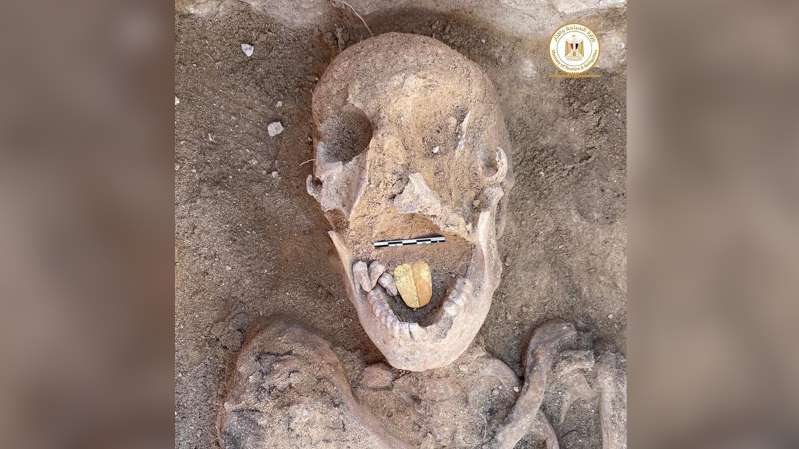ANCIENT SCROLL FOUND AT MOUNT VESUVIUS REVEALS DETAILS OF PLATO’S FINAL HOURS









Ancient scroll found at Mount Vesuvius reveals details of Plato’s final hours
Agroundbreaking discovery of a papyrus scroll buried in AD79 eruption of Mount Vesuvius may reveal more about the final hours of famous Greek philosopher Plato as well as his burial place.
The scroll, known as the History of the Academy and written by philosopher and poet Philodemus of Gadara, has been unreadable since it was found in 1750, in a villa in Herculaneum, now known as Ercolano in Italy.
Now, a team of researchers has used infrared and X-ray scanners to decipher about 1,000 words.
“It is the oldest history of Greek philosophy in our possession,” said professor Graziano Ranocchia, a papyrologist at the University of Pisa and the project’s lead researcher.
“It is an extraordinary outcome that enriches our understanding of ancient history.”
The text reveals that shortly before his death at 81, Plato had a high fever and was unhappy with a musician from Thrace who was present and playing the flute.
Plato, who was Socrates’s student and Aristotle’s teacher, told the musician she had a “scant sense of rhythm”.
The deciphered words also suggest that Plato was buried in a private garden in the Academy of Athens, the world’s first university, which he founded.
Before this discovery, it was only known that he was buried somewhere on the grounds of the academy.
“We knew Plato was buried at the academy, which was very large, but thanks to the scans we now know he was buried in a garden in a private area, near the sacred shrine to the Muses,” Mr Ranocchia was reported as saying by The Telegraph.
The academy was destroyed by Roman general Sulla 300 years later and its archaeological remains now remain in Akadimia Platonos in Athens.
The text goes on to reveal that Plato was sold into slavery on the island of Aegina as early as 404BC when the Spartans conquered Aegina, or in 399BC immediately after the death of Socrates. Previously, it was believed that Plato was sold around 387BC by Syracuse ruler Dionysius.
Mr Ranocchia said that the work of deciphering the scroll is still in its initial stages and will be completed in 2026.
“For the first time, we have been able to read sequences of hidden letters from the papyri that were enfolded within multiple layers, stuck to each other over the centuries, through an unrolling process using a mechanical technique that disrupted whole fragments of text,” he said.
Story by Shahana Yasmin: The Independent:
Articles - Latest
- Earthquakes can trigger quartz into forming giant gold nuggets, study finds
- Linda Nolan, singer and television personality, dies aged 65
- Sly Stone, pioneering funk and soul musician, dies aged 82
- Dangers of an overloaded car include:
- Natural Disaster today
- Japan earthquake: Kushiro shakes for 'too long' as 6.1 mag tremor hits
- 'Cult' members jailed over coroner kidnap plot
- Flood risk threatens Swiss valley after glacier destroys village
- Thailand Grapples with Floods and Economic Shifts: Government Response, Community Resilience, and Market Predictions
- Powerful hailstorm floods buildings and streets in Gniezno
- The Significance of the 49-Day Journey After Death
- Killing prisoners for transplants: Forced organ harvesting in China
- Southern Japan hit by 6.6-magnitude quake near Nankai Trough, tsunami warnings lifted
- Peru’s coastline battered by tsunami-like waves one day after country declares environmental emergency
- California fires live updates: ‘Dangerous’ winds return as residents are warned over threat of new wildfires
- Osibisa founding member and singer Teddy Osei dead at 88
- Oliviero Toscani, photographer behind shock Benetton ads, dead at 82
- California LA Mayor Karen Bass awkwardly ignores questions from reporter about California fires
- UK set for more freezing weather as homes and businesses deal with flooding
- Jean-Marie Le Pen dead at 96: His political career through the years
- Jimmy Carter, former US president, dies aged 100
- ‘Jazz’s most significant composer’ Benny Golson dies at 95
- Billionaire founder of fashion chain Mango dies in accident
Articles - Most Read
- Main
- Contact Us
- The science behind Ouija boards
- Cosmic Consciousness - What is Cosmic Consciousness-2
- Cosmic Consciousness-Introduction
- Cosmic Consciousness - Introduction-2
- MASSIVE 6.1 MAGNITUDE EARTHQUAKE HITS NEW ZEALAND AS NATION STILL REELING FROM CYCLONE
- ARCHAEOLOGISTS UNRAVEL THE TRUTH OF APHRODITE, GODDESS OF LOVE, ON VALENTINE'S DAY
- Cosmic Consciousness First Words - 1V - 2
- The Human Condition-Thomas Keating
- Cosmic Consciousness First Words - V -
- Cosmic Consciousness V - 2
- Cosmic consciousness - First Words - IV
- Shakyamuni Buddha or India the 1st “Black Revolutionary Hero.”
- Cosmic Consciousness - What is Cosmic Consciousness?
- The Human Condition-2-Thomas Keating
- Evolution and Devolution-Chapter 2
- The Human Condition - Thomas keating-3
- Cosmic Consciousness-On the Plane of Self Consciousness
- Drinking From The Mountain Stream - Milarepa
- The Human Condition - 4
- Cosmic Consciousness - 3 - On the Plane of Self Consciousness
- The Human Condition - 6
- Evolution and Devolution-Chapter 1
- On the Plane of Self Consciousness - 2
- Contemplation and the Divine Therapy - 2
- The Buddhist System of Liberation - 2
- Milarepa's World-2
- The Human Condition - 5
- Milarepa's World
- On the Plane of Self Consciousness IV
- The Buddhist System of Liberation
- On the Plane of Self Consciousness IV - 2
- JERRY RAWLINGS, GHANAIAN STRONG MAN WHO CAME TO POWER IN A COUP BUT INTRODUCED DEMOCRACY – OBITUARY



